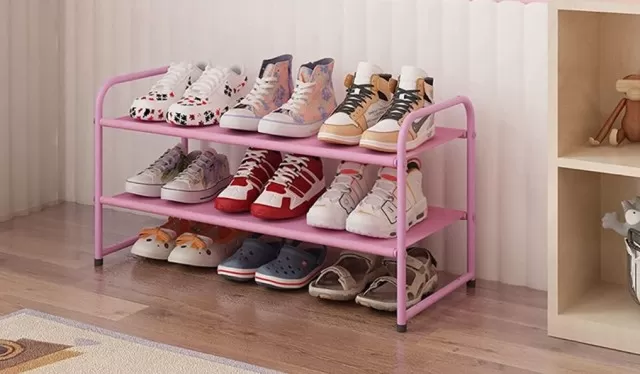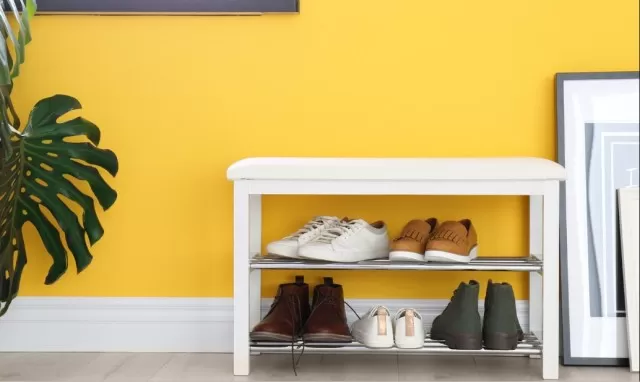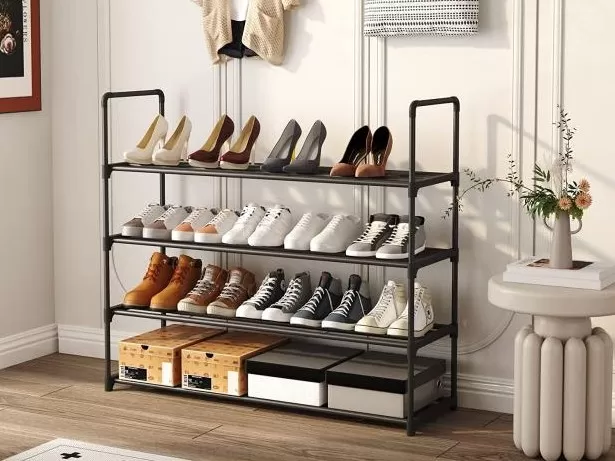Organizing shoes can be a challenging task due to their abundance and bulky nature. It’s crucial to allocate space and establish an effective system for storing them.
To assist you in reducing shoe clutter and easily locating your desired pair, I will provide you with valuable shoe-organizing techniques I’ve acquired as a professional organizer.
By devising a personalized plan that suits your available space and caters to your specific shoe collection, you can declutter your walkways and maintain the condition of your shoes.
Discover the most effective methods and tools to take control of your footwear with these simple and practical shoe organization ideas.
Shoes Organization Ways for Tidy Closets

Streamline Your Shoe Collection.
Before you dive into organizing your home, it’s essential to declutter by parting ways with shoes that no longer serve you.
Take the time to donate or discard shoes that don’t fit, aren’t your style anymore, cause discomfort, or are beyond repair. This step will help you gain a clear perspective on the number of shoes you have and make better decisions about organizing them.
Additionally, consider cleaning the shoes that you plan to keep, ensuring they are fresh and ready to wear when you start organizing.
Categorize Your Shoes.
Once you have narrowed down your shoe collection to the pairs you want to keep, sort them into categories.
Separate your sneakers, sandals, heels, and other types of shoes to understand the quantity and variety you have. This categorization will assist you in determining the most suitable storage solutions for each type of shoe.
It’s also helpful to organize shoes based on seasons, formality, and frequency of use.

Assess Your Storage Options.
Survey your living space to identify the best storage locations for your shoes.
You may need to get creative, especially if you have limited space available. While it’s ideal to keep all your shoes together, you might need to allocate them to different areas.
The key is to group similar shoes, enabling easy access and efficient organization. For instance, dedicate a specific spot near the front door, mudroom, or garage for the shoes you wear every day.
Consider the following suggestions to establish an effective shoe storage system tailored to your household’s needs.
Organize Everyday Shoes.
For the pairs of shoes you wear regularly, it’s important to have a designated spot near your main entryway for easy access.
Install a shoe rack with two or three tiers to accommodate everyday shoes like sneakers, work boots, or shoes for outdoor activities. If you have a large family, invest in a tall vertical rack that can hold everyone’s favorite pairs.
Alternatively, a standing shoe cubby with individual slots can keep shoes separated and neatly tucked in place, although it may not be suitable for bulkier shoes like booties. Utilize an over-the-door shoe organizer in the Coat Closet for flat shoes, arranging them by frequency of use or family members.

Store Formal Shoes Properly.
Special occasion shoes that you only wear occasionally shouldn’t occupy prime space in your entryway.
Instead, store them in your primary closet or on a shelf in a spare Bedroom Closet. By keeping all your formal shoes in one place, you can easily find the perfect pair when dressing up for weddings or other fancy events.
Consider using a heel rail, which involves installing shallow picture shelves on a bedroom or walk-in closet wall to hang your high heels securely. Alternatively, opt for protective shoe boxes that allow your shoes to breathe and stack easily.
Clear shoe boxes with ventilation holes and drop-front lids work well for storing special shoes on the top shelf of your bedroom closet.
Rotate Shoes Seasonally.
If you don’t have enough Closet Space to store all your shoes year-round, it’s helpful to find storage options and rotate your shoes based on the season.
For example, during the hot summer months, you can store winter boots under the bed. Use an under-bed storage container specifically designed for shoes or boots, or place shoes in individual drawstring bags and stack them in a lidded tote labeled for easy identification.
If you have mid-calf to over-the-knee boots made of flexible materials, consider hanging them using boot clip hangers designed to keep them off the floor and prevent them from flopping over.
Optimize Your Shoe Organizers.
Once you have determined the categories and storage locations for your shoes, it’s time to maximize the efficiency of your designated shoe storage spots.
Consider using a hanging shoe cubby if you have some space on a closet rod to organize different pairs vertically. Decorative baskets placed on a shelf provide a simple and stylish solution for storing casual shoes.
Assign a basket to each family member and place them in the mudroom to encourage everyone to keep their shoes tidy. If you have a small space, investing in a storage bench or ottoman with hidden shoe storage can serve dual purposes, offering a place to sit while tying your laces and keeping your shoes organized.
For larger entryways, you might even consider creating a landing zone with built-in shoe storage underneath.
*The information is for reference only.